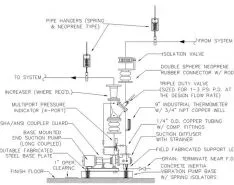Learn how different metals react, and how corrosion inhibitors can help avoid downtime.
Seals
Sealing solutions are critical to pumping to prevent leakage and, ultimately, failure. These are especially important in harsh conditions, whether from particulates, extreme temperature, or corrosive or heavily viscous fluid. The selection of the right seal can have as much impact on the system success as pump selection. These articles help with that selection and with the monitoring and maintaining of all types of seals.
Original equipment experienced reliability issues, resulting in downtime and maintenance costs.
Consider mechanical seals, gland packed seals and lip seals.
The conductivity probe and float switch are the top sensors used.
Defining how a mechanical seal will be used and its environment is critical for optimal operation and life.
Extra energy transmitted can produce larger sealing stress on the gasket.
Strong oxidizers can damage metal, causing pitting or rust and creating possible safety concerns.
A flexible choice can adapt to permanent misalignment, preventing future damage.
Understand implications involved with using gas film seals in this application.
North Sea oil platform seals, pumps upgraded as part of defect elimination process.
Coffee also discusses need for training, optimism for coming year and more.
Elastomeric polymer materials provide mechanical strength and self-lubricating properties required in challenging settings.
Learn how K factor affects this choice.
LPS technology uses static field of injectable sealant and separate air flush.
Consider updating to bearing protectors and cartridge seals.
System saves cost and time during hot summer months.
Flexible graphite and PTFE are commonly used in cryogenic sealing.
How to seal rotating shafts for low temperature to cryogenic fluids.
Why rubber is the best choice for reducing problems.
















